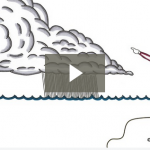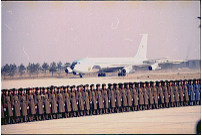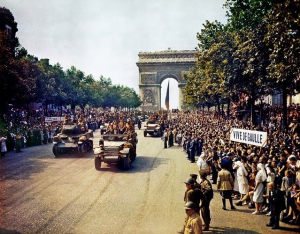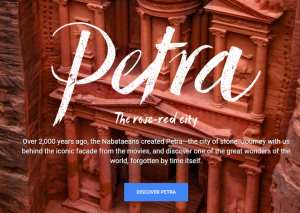Woodrow Wilson International Centre for Scholars Digital Archive
- In the early ’90s, the so-called “Iron Archives” of Russian political documents from the Cold War era opened up to historians, shedding light on the earliest days of Mao Zedong and Joseph Stalin’s diplomatic alliance.
- But not all of the Russian documents were declassified at that time. The Woodrow Wilson International Center for Scholars has launched a new digital archive containing recently declassified materials from some 100 different international collections, including a cable Mao sent to Commander Filippov (Stalin’s alias) eagerly detailing his plans to study Russia and complaining about his poor health.
- Learn more in the original posting from Open Culture.
The U.K. publication The Spectator recently announced that you can now browse through 180 years of their archives online. What a great way to see what was going on at a particular point in time from the persepctive of the time. Read more at Free Technology for Teachers.
Seven Minute Overview of World War One
Watch the front lines as they change through the course of the war.
Read the full article at FreeTech4Teachers (and find similar resources for studying World War Two).
Review Videos for US History and European/World History
Helpful review videos for AP and College students from Tom Richey, a History Teacher from South Carolina.
Helpful review videos for US History and AP Government students from Keith Hughes, a History teacher from New York state.
 Trans Atlantic Slave Trade Visualisation
Trans Atlantic Slave Trade Visualisation
The Trans Atlantic Slave Trade Visualization is a series of heat maps developed by Georgetown University Professor Adam Rothman and an undergraduate computer science student, Matthew Burdumy.
The Trans Atlantic Slave Trade Visualization depicts three patterns. Those patterns are the cumulative frequency of slave voyage port of departure, the cumulative frequency of principal port of slave purchase, and the cumulative frequency of principal port of slave sale. When you press the “animate” button on the maps you will see the increasing frequency of each pattern represented by expanding and darkening color blotches on the maps.
(From a posting at FreeTech4Teachers)
HSTRY: Create Multimedia Timelines
HSTRY is an easy to use free tool to create multi-media timelines, and it even allows you to insert quizzes along the way! Helpful tutorial videso, and an archived collection of featured timelines round out the offerings.
 Online Resources for Teaching with Primary Sources
Online Resources for Teaching with Primary Sources
A collection of resources related to teaching history with primary sources. Courtesy of Richard Byrne at Free Tech 4 Teachers.
Wi-Phi is an ppen access philosophy project from the folks at Yale and MIT. Now featuring 105 short videos introducing a host of philosophical issues. Learn more at Open Culture.
First Nations, First Stories (October 2015 e-newsletter). Links to interesting articles from the magazine and website.
Canada’s Great War Album (October 2015 e-newsletter). Links to interesting articles from the magazine and website.
Video interview with the award winning author of several books on Canada’s history. Mr. Cook is the director of research at the Canadian War Museum, and adjunct professor at Carleton University. Check the ESA Library collection for a number of his titles.
 Canada’s History YouTube Channel
Canada’s History YouTube Channel
Video channel. Webinars, panels, forums, teaching resources and more.
Primary Vs Secondary Resources
FABULOUS – no exaggeration here! – little video from the Minnesota Historical Society which clearly and succinctly explains the difference between Primary and Secondary Sources.
 From Historica Canada… Use this link to access the homepage for a suite of materials designed to help you teach about the residential school experience. The full set of PDF files is posted on the ESA Teacher Share under Library@ESA.
From Historica Canada… Use this link to access the homepage for a suite of materials designed to help you teach about the residential school experience. The full set of PDF files is posted on the ESA Teacher Share under Library@ESA.
 From Historica Canada… Use this link to access the homepage for a suite of materials designed to help you teach about the residential school experience. The full set of PDF files is posted on the ESA Teacher Share under Library@ESA.
From Historica Canada… Use this link to access the homepage for a suite of materials designed to help you teach about the residential school experience. The full set of PDF files is posted on the ESA Teacher Share under Library@ESA.
 Nixon’s Visit to China: Resources
Nixon’s Visit to China: Resources
A collection of resources – primary and secondary – available via this link to a comprehensive posting at FreeTech4Teachers.
From TVO’s The Agenda… April marks 100 years since the First World War’s Vimy Ridge battle took approximately 3,600 Canadian lives and wounded 7,000 others. Canadian photojournalist Racheal McCaig shares her images of the battlefield today and the memorial that immortalizes Canada’s sacrifice. Her exhibit, “Je Me Souviens: Vimy 100,” was part of Vimy Ridge’s centennial commemorative events in France and will eventually tour Canada. She joins The Agenda to discuss her work.
Historica Canada: Think Like a Historian
Historica Canada: Think Like a Historian. The Think Like a Historian series is a tool for educators and students to build skills to analyze and interpret primary sources.
WWW Virtual Library: International Affairs Resoruces
The WWW Virtual Library of International Affairs Resources… a free academic support site from Elizabethtown College in Pennsylvania.
Learn more here at this posting from FreeTech4Teachers.
Discover Petra
Ever the geographer… it’s not brand new, but I just stumbled across this… Exploring the ancient city of Petra in Google Maps. The site Discover Petra takes you – and your students – on a virtual field trip that unlike any exploration you can do from a book. In additional you can also find a collection of imagery from across Jordan here.
From Historica Canada…
Mark the 100th Anniversary of the Halifax Explosion and explore primary source analysis with your students
Explore personal letters and sketches from survivors.
Access the full set of resources here.
Also refer to this article, from Canada’s History, titled On the Frontlines of Disaster.
Published in October 2012 by Bloomsbury Publishing in collaboration with the Churchill Archives Centre, the Churchill Archive is a digital library of modern international history.
It includes more than 800,000 pages of original documents, produced between 1874 and 1965, ranging from Winston S. Churchill’s personal correspondence to his official exchanges with kings, presidents, politicians, and military leaders. This is more than a fantastic collection of primary source material; it is a unique online resource offering new insight into a fascinating period of our past.
Authenticaiton credentials available upon request from the ESA Library.

















